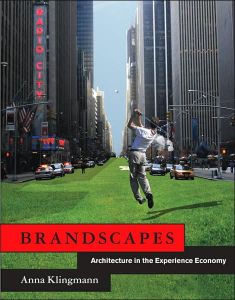Join getAbstract to access the summary!

Join getAbstract to access the summary!
Anna Klingmann
Brandscapes
Architecture in the Experience Economy
MIT Press, 2007
What's inside?
Get sexy or fail. In the experience economy, you need a seductive brand to succeed.
Recommendation
The mall where you shop, the coffee shop where you take your breaks, the museum that you visit – wherever you go, you are walking through a “brandscape,” or branded world. Anna Klingmann describes this aesthetic experience in her eye-opening study of branding in all its forms, with a special focus on architecture. Offering a unique perspective, Klingmann breaks down the strategy behind well-known brands such as Disney, Apple and Starbucks. She also parses the experiences that brandmakers create everywhere from cruise ships to casinos to that “urban entertainment district” where you might have suffered your latest attack of brand overload. Klingmann’s text meanders at times, yet her trenchant analysis is rewarding. getAbstract recommends this book to anyone seeking a perceptive analysis of branding strategies – with an unusual recognition of how architecture and landmarks serve to generate a brand image.
Summary
About the Author
Architect and critic Anna Klingmann is principal of a branding agency. Her articles have appeared in AD Magazine, Architecture d’Aujord’hui and other publications.
















Comment on this summary